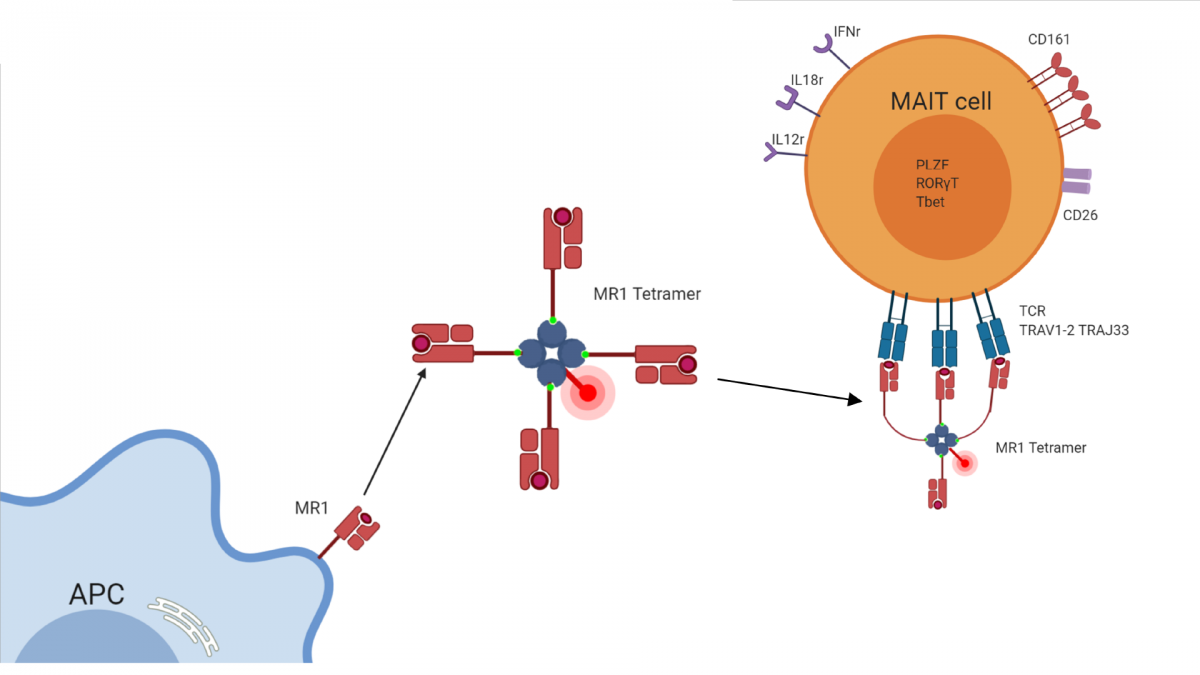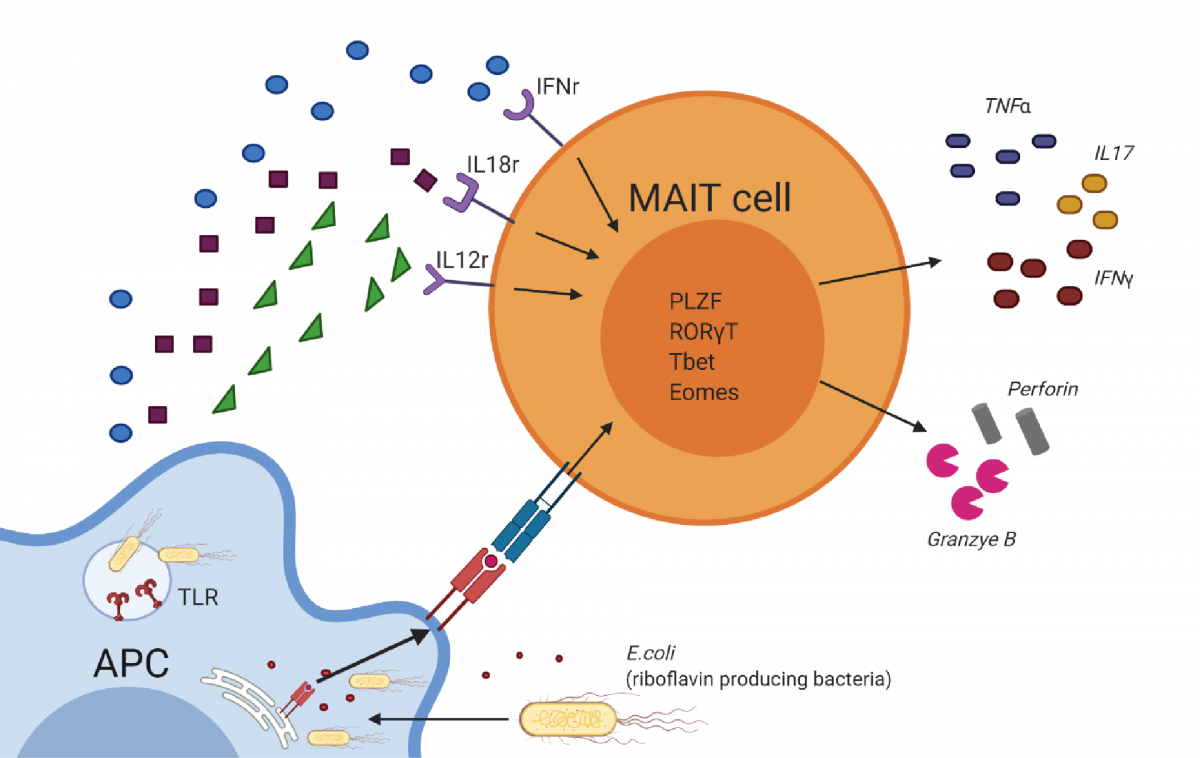Defining a novel immune cell in cattle – the power of meetings
Dr Matthew Edmans, a postdoctoral researcher at the University of Oxford, writes about his recent publication with other IVVN members (Edmans et al) that identified MAIT cells in cattle and characterised their response to bacterial infections.
Following a productive meeting at the International Veterinary Vaccinology Network (IVVN) conference in Nairobi in 2018, my co-supervisor Elma Tchilian mentioned discussing my mucosal associated invariant T cell (MAIT cell) work. This work consisted of characterising these specific cells in animal species using MR1 tetramers and activation-based methods (figures 1 and 2 below). I carried out this project with my other co-supervisor Paul Klenerman at the University of Oxford and Sidonia Eckle at the Peter Doherty Institute, University of Melbourne. Lindert Benedictus, then based at the Roslin Institute, also joined as a collaborator, providing cattle samples and reagents.

Figure 1 - MR1 tetramer identification of MAIT cells (created with BioRender.com).
MAIT cells are a non-conventional T cell population that responds to vitamin metabolites (such as riboflavin derivatives) rather than the peptide ligands recognised by conventional T cell populations. As their name suggests, MAIT cells are enriched in mucosal barriers where they are susceptible to various stimuli and can be involved in antimicrobial response and tissue repair. They have also recently been shown to enhance vaccine responses. Interestingly, MAIT cells were first putatively identified in cattle in 2003, alongside humans and mice, using genomic methods. However, whereas MAIT cells went on to be defined in mice and humans, this fascinating immune cell was partially overlooked in cattle, with just one further publication identifying MAIT cells in multiple tissues in cattle and sheep (again using genomic methods) in 2010.

Figure 2 - MAIT cell activation by bacteria (created with BioRender.com).
When studying the cattle samples sent from the Roslin Institute, we identified a clear population using human MR1 tetramers. The identified cells were reactive to 5-OP-RU (a classic MAIT cell-activating ligand), strongly suggesting that MAIT cells were identified. The binding of cattle MAIT cells by human MR1 was a fascinating finding in its own right and is indicative of the highly conserved nature of the MAIT cell MR1 axes between species. Following this exciting first look, we met at another conference, organised by the British Society for Immunology's Comparative and Veterinary Immunology Group, in January 2019. During a discussion over coffee (the best way to discuss science), we resolved the issue of characterising the identified population in greater detail, comparing our findings to work carried out in mice and humans over the last two decades. Much of this work was carried out at the Roslin Institute with Lindert Benedictus and Tim Connelley, where I learned much about cattle immunology.
Our results demonstrated that MAIT cells in cattle were very similar to those identified in humans in both phenotype and function. A few notable examples include (1) an effector memory phenotype regardless of tissue localisation, (2) expression of PLZF, a transcription factor that is generally associated with innate function, and (3) rapid activation by 5-OP-RU and riboflavin competent bacteria. Our study also showed that cattle MAIT cells were activated in vivo during mastitis and tuberculosis, suggesting a role in bacterial infections. While we did not formally demonstrate that cattle MAIT cells are also reactive to viruses in this study, we did determine that they were sensitive to direct cytokine activation by IL18 and IL-12. MAIT cells sense virus secondarily through sensitivity to IL-18 and IL-12, and IL-18 responsiveness is the mechanism by which they enhance viral vectored vaccine response in humans. Therefore, MAIT cells also likely react to viral infection in cattle as well.
Our data collectively shows that MAIT cells in cattle are involved in bacterial responses, and they may also be involved in virus and vaccine response. Our study has taken what we know about MAIT cells in humans and shown it to also apply in cattle, making human immunology a helpful guide for future MAIT cell studies. Improving our understanding of MAIT cells in cattle will hopefully lead to better ways to target this cell to enhance vaccine responses and treat various diseases, something of interest to both veterinary and human medicine.
Main image credit: Matthew Edmans
